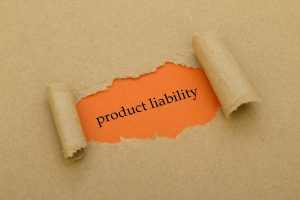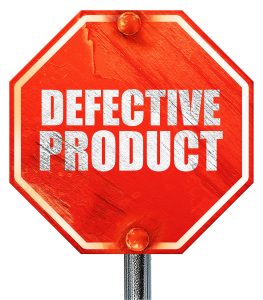For any attorney who has pursued product liability cases on behalf of injured victims, you know that the attorney(s) for the manufacturer will often claim that the plaintiff “misused” the product and that it was the plaintiff who caused the incident. Oftentimes, attorneys representing the plaintiff will not push back on such a statement and will allow the statement or contention to go unchallenged prior to trial. This is a mistake.
To have a viable affirmative defense of product “misuse,” a defendant must present evidence “showing that the plaintiff used the product in some manner different from that intended by the manufacturer. “Kelly v. M. Trigg Enterprises, Inc., 605 So. 2d 1185 (Ala. 1992). This sounds simple enough, but it isn’t. One might conclude from such a legal declaration that “foreseeable” uses could also be considered “misuse,” but that is not correct. For purposes of the AEMLD,” use is intended if it is one that is reasonably foreseeable by the manufacturer.” Id. at 1192.
 For instance, many products possess safety buttons, safety levers, lockout tagout features and guards. Some of these safety features require the user to take affirmative steps to engage the safety mechanism. If the user fails to engage the safety mechanism and gets hurt, has the user “misused” the product? The answer is no. Why? Because the failure to engage the safety mechanism is reasonably “foreseeable” to the manufacturer. Again, the user has to be using the product in a manner that is “unforeseeable” to the manufacturer for the affirmative defense of “product misuse” to apply.
For instance, many products possess safety buttons, safety levers, lockout tagout features and guards. Some of these safety features require the user to take affirmative steps to engage the safety mechanism. If the user fails to engage the safety mechanism and gets hurt, has the user “misused” the product? The answer is no. Why? Because the failure to engage the safety mechanism is reasonably “foreseeable” to the manufacturer. Again, the user has to be using the product in a manner that is “unforeseeable” to the manufacturer for the affirmative defense of “product misuse” to apply.
Under well-settled Alabama law, if the plaintiff’s conduct is “reasonably foreseeable” as as matter of law, then product misuse is not a viable defense and should be struck as an affirmative defense. The affirmative defense of product misuse is reserved for circumstances in which the defendant manufacturer contends that the injury causing use of the product was not “reasonably foreseeable.” For instance, in Trigg, the manufacturer of air freshener contended that it was not “reasonably foreseeable” that the product would be used as an inhalant to get high and thereby asserted the defense of product misuse. Trigg at 185. The Alabama Supreme Court in Trigg held that the plaintiff submitted substantial evidence of “reasonable foreseeability” and reversed the summary judgment.
 However, in many product liability cases, the plaintiff is using the product in a manner that was “reasonably foreseeable” to the manufacturer as a matter of law. In fact, there are times where the manufacturer was aware that the product was being used in such a manner and/or the internal documentation reflects that the manufacturer knew the product could be used this way in error. When such evidence exists, the attorney for the plaintiff should file an offensive motion for partial summary judgment to dispose of the product “misuse” defense and move in limine that the manufacturer and attorneys should not be allowed to characterize the plaintiff’s conduct as product “misuse.”
However, in many product liability cases, the plaintiff is using the product in a manner that was “reasonably foreseeable” to the manufacturer as a matter of law. In fact, there are times where the manufacturer was aware that the product was being used in such a manner and/or the internal documentation reflects that the manufacturer knew the product could be used this way in error. When such evidence exists, the attorney for the plaintiff should file an offensive motion for partial summary judgment to dispose of the product “misuse” defense and move in limine that the manufacturer and attorneys should not be allowed to characterize the plaintiff’s conduct as product “misuse.”
Now, this does not mean that the manufacturer would be precluded from arguing that the plaintiff’s conduct was unreasonable and asserting the defense of contributory negligence. The affirmative defense of “product misuse” is a separate, independent defense from contributory negligence. Carruth v. Pittway Corp., 643 So. 2d 1340 (Ala. 1994). The issue of contributory negligence will still have to be addressed and dealt with at trial or prior thereto. Nevertheless, disposing of the product “misuse” defense prior to trial will at least cut down on the number of available defenses to the product manufacturer and will eliminate a product “misuse” jury charge from being given to the jury.
 Alabama Injury Law Blog
Alabama Injury Law Blog


